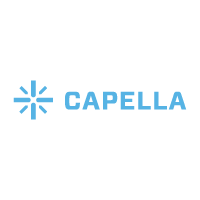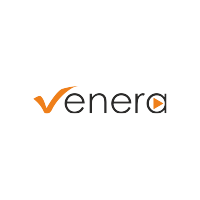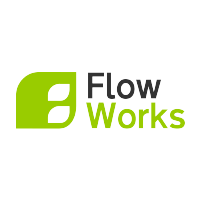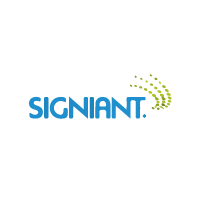
SOLUTIONS
B2B Content Sales
B2B Content sales solution―from content license rights management via ingest and aggregation of video, metadata, picture, audio, subtitle to a presentation, purchasing and delivery.
What does the B2B content sales cycle include? What are the challenges? And where does it overlap with B2C content sales?
We are often approached to help in selling content from a historical archive or ongoing productions of movies, series, magazines, or event reports. So a technical problem about preparing content to be offered on a B2B sales portal was discovered. But isn't that simplifying the all over business process a bit too much?
Today's business models in monetizing content are much more versatile than they were before the Internet. Nowadays, content producers and owners have many distribution channels available to be leveraged in parallel, to earn back costs to produce and to make a profit. So from a business perspective, the business process starts with spending money to produce or acquire content and ends with the sale of every single piece of content. Due to revenue share based business models, this means that every Video On Demand view by an end-customer is such a revenue contribution.

That said, the B2B content sales transaction is part of a business process that starts much earlier and is tightly connected to the downstream B2C content sales business. Such B2C transactions might be a third party's business or can be an additional business of the content owner. Please have a look at our VOD Content Aggregation and Publishing Solution.
How is this end2end business process implemented by our B2B Content Sales Solution?
Our B2B content sales solution is composed on the very top layer of a content rights management system. It manages all business-relevant contractual data, content metadata, and aggregates the end-customer's usage data. This way, it provides you with a cockpit to actively drive your content B2B sales as well as B2C sales via campaign management.

The actual content management takes place within our Production Asset Management system. Content essences can be received via internet uploads, local ingests, or from an existing archive. Please have a look at our All Ingest Solution. The asset packages for B2B sales are aggregated from a video, audio, subtitle, picture essences, descriptive, and technical metadata as well as pricing information. This is achieved via internal processing engines (e.g. transcoding, audio/video/picture processing, quality control) and by leveraging services from external providers. Once approved, assets are presented within the B2B sales portal.
The B2B sales portal is similar to a B2C VOD library. It presents the content stock just how an end-customer would like to browse it, but it also shows additional business-relevant metadata. Assets can be added to a shopping cart and at check-out, no credit card number is requested, but instead communication with the sales department is initiated. That said, the solution fully supports the negotiation process via integrated sales and communication tools.
Once a "sale" is closed, the assets are processed (e.g. transcoding incl. version rendering and watermarking, picture rendering), packaged as requested (e.g. languages, subtitles, artwork, metadata), delivered fully automatically, and then finally the customer is notified. What happens next fully depends on your business model or the agreement with your customer. Either all data gets prepared to issue a one-off invoice or end-customer usage gets collected for a monthly revenue share invoice. Various other business models between such extrema are supported.
typical network architecture

Ingest
Ingest is a topic itself. Our All Ingest Solution addresses all kinds of ingest. The complete solution or relevant elements from it can be an integral building block of this Content Sales Solution. Therefore, we focus on typical ingest needs for content sales and delivery.
Central Ingest Station
The Central Ingest Station is the main place for ingest operations. It's usually located in a room where all new content is delivered. A team of ingest specialists use several dedicated workstations to bring files from various storage devices into the sales and delivery environment. While doing so, files are previewed, selected, pre-cut, and stitched. Technical metadata is automatically generated and descriptive metadata is added manually. The product used for this function is Woody IN2IT Access. It can transcode and re-wrap the files to the platform-internal format.
A variant of central ingest is offered when the source devices are attached to a server or files are being moved there before the ingest operations. In this case, Woody IN2IT Exchange is the right choice. Most often, via watchfolders new files are detected and automatically ingested with standard metadata. If metadata is to be manually set, Woody IN2IT Access can act as a client to IN2IT Exchange.
In other cases, the need is more about starting an automatic workflow for a bunch of files. In this case, x-dream-media's Workflow Starter allows you to remotely browse, preview, select, and segment video files via a WebGUI. Compared to Woody's IN2IT, the x-dream-media Workflow Starter sends the files for processing to x-dream-media's Workflow Manager (WFM). WFM orchestrates transcoding, re-wrapping, QC, virus scanning, and other operations. It's usually used to manage larger amounts of material.
Remote Contributors
External contributors might require high-resolution or low-resolution video files as they are providing special effects, graphics, subtitles, or translations. In return, they will send the results of their work as source material to the post-production team. Some of these contributors may have a permanent engagement while others may only provide essences occasionally and in smaller volumes, however, the number of such contributors might be very high. Therefore, a simplified way to up- and download video files with related metadata is required. Tools have to be accessible globally and intuitive to use. We address these needs by "upload and download rooms". Technically, these rooms are websites that take or provide the essence file and request or provide mandatory and optional metadata. The contributors have access to an up- or download room if they are permanently registered users or were invited by an operator to a temporary room. The essences, qualities, and functions within their room are controlled via rules set by the operator. All interactions get logged.
Processing
After files and metadata have been ingested, fully automated actions can take place under control of our Production Asset Management System (PMS): Transcoding and re-wrapping to a house format or browsing proxies, audio processing (e.g. normalizing), video processing (e.g. standard conversions), quality control etc.
Preparation
The asset packages to be made available on the B2B sales portal are composed of video, audio (in various languages), subtitles, preview pictures in various resolutions and sizes, descriptive metadata and text in various lengths, business metadata, licensing, and pricing information. But all such information might come from various sources like storage pools and databases or may need to be added manually by operators. Our PMS supports this process either by automatic retrieval from electronic sources or by requesting it from operators in a software assisted process.
Sales
Finally, the fully prepared asset package is published on the B2B sales portal. Registered users can preview this, similar to an end-user with a subscription plan. In contrast, a business customer can order one or multiple assets to be delivered to them in their desired quality, language(s), artwork, and metadata.
Content Delivery
Ultimately, approved content deals have to be delivered to B2B customers. As customers requirements might differ for video formats, picture resolutions, metadata structure and so on, some additional file processing (e.g. transcoding, picture rendering) is required prior to files being sent. Some might request a QC report as part of the deliverables. Finally, a high volume of video files and metadata needs to be sent via a safe, secure, and guaranteed method. Within our content sales solution, we use Signiant's Managers+Agents to orchestrate and control all file preparation and delivery.
service architecture of the B2B Content Sales Solution
The Production Management System (PMS) is the heart of our Content Sales Solution. It acts as a Media Asset Management System, Workflow System and Traffic System. The product for the PMS we've selected is Flow Work's Flow Center. For customers with distributed organizations, the PMS can be deployed at every facility and connected to act as one global system via the flow-to-flow module.
Ingest can happen in different ways. If it is performed manually, then we would select IN2IT Access from Woody Technologies as the tool of choice. Alternatively, the PMS can expose a feature rich upload portal or upload micro-page on an invitation. Both tools will allow supplying essence files as well as metadata manually. For bulk asset package transfers, we prefer Media Shuttle or Managers+Agents from Signiant.
The Transcoder and Processors are engines that help to fully automate the end2end business process. The PMS allows integration with any other already existing or future software solution. For our transcoder, we've selected Cambria FTC from Capella Systems. Sound and video processing can happen as part of the transcoding process or in certain cases via specialized software services. Picture rendering and metadata processing are implemented based on components of the PMS. Subtitle generation and audio dubbing might be outsourced to external suppliers. For automatic transcription and translation, we've selected MediaWen and Aiconix. We can integrate with those companies via interaction user interfaces. For automatic quality control, we utilise Pulsar from our partner Venera Technologies, and for manual quality control, we offer review user interfaces.
The inbound or outbound File Transfer can happen via traditional FTP transfers. For obvious reasons, we prefer secured and accelerated file transport. As a file transfer tool, we've selected Media Shuttle or Managers+Agents from Signiant.
B2B Content Sales Solution vendor partners

File transcoding

Quality Control

Content & workflow management

Secure file transport

File ingest




